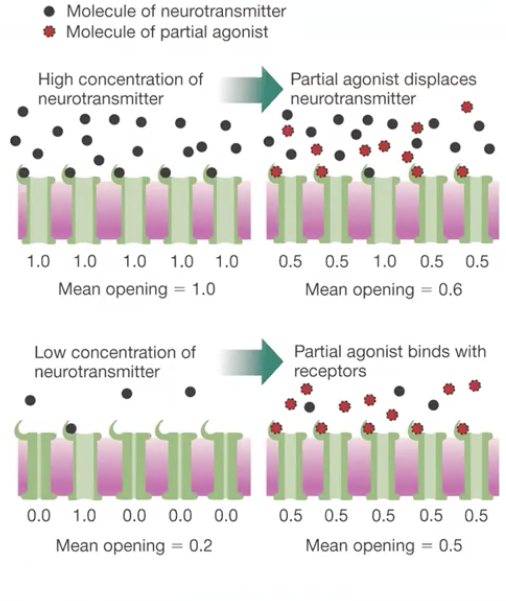lecture: 13.3 schitzophrenia
1/12
There's no tags or description
Looks like no tags are added yet.
Name | Mastery | Learn | Test | Matching | Spaced |
|---|
No study sessions yet.
13 Terms
Symptoms of schizophrenia
Positive (something extra being added)symptoms:
Presence of unusual behaviors, in excess of typical functioning
Though disorders delusions
Hallucinations
Negative symptoms:
Absence or decrease in some typical behaviors
Social withdrawal, lack of affect, and reduced motivation
Cognitive symptoms:
Cognitive deficits, such as , difficulty sustaining attention, low psychomotor speed, deficits in learning and memory, poor abstract thinking, poor problem solving
Age of onset of psychotic symptoms:
Between early adolescence and early adulthood peaking at age of 20-25 and more common in males than females
Examples of schizophrenia symptoms:
Positive:
Hallucinations
Disordered thoughts
Delusions
Persecution
Grandeur
Control
Negative:
Flat affect
Poverty of speech
Lack of initiative and persistence
Anhedonia
Social withdrawal
Cognitive:
Difficulty in sustaining attention
Low psychomotor speed
Deficits in learning/memory
Poor abstract thinking
Poor problem solving
Genetic factors:
Twin and adoption studies indicate the heritability of schizophrenia
Higher rates in monochorionic monozygotic twins
No “schizophrenia gene” but some associated with them
Schizophrenia:
Mutations: mutation of the DISC1 gene
Paternal age:
Children of older fathers are at increased risk
Increase likelihood of mutation
Epigenetics
Environmental contributions:
Associated factors:
Season of birth (late winter/ early spring)
Viral epidemics
Vitamin D deficiency
Population density
Substance abuse
Protective factors: limited evidence
Obstetric complications:
Prenatal malnutrition and stress
Complications of pregnancy
Toxemia
Abnormal fetal development
Labor and delivery complications
Brain anomalies: ventricular size
People with schizophrenia have increased ventricle size
Cerebral gray matter:
Decreased gray matter in people with schizophrenia
MRI scans demonstrate the loss of brain volume in a patient with schizophrenia over 10 years. Notice the enlargement of the lateral; ventricles (dark region in the center of the brain)
Dopamine and positive symptoms:
Dopamine hypothesis: positive symptoms of schizophrenia are caused by hyperactivity of dopaminergic synapses in the mesolimbic pathway
Drugs activating as agonists produce and reinforce positive symptoms
Some studies show those diagnosed with schizophrenia release excessive dopamine, brains may contain more dopamine receptors.
Mesolimbic dopamine pathway:
Overactivity of the mesolimbic pathway leads to positive symptoms
Mesocortical pathway dysfunction leads to negative and cognitive symptoms
Mesolimbic pathway and treatment side effects:
Long term drug treatment of schizophrenia:
Typical antipsychotics block dopamine activity
Parkisonian symptoms ‘
Tardive dyslexia: repetitive involuntary movements
Mesocortical DA pathway: Negative and cognitive symptoms
Hypofrontality:
Believes to be responsible for negative symptoms
May also be responsible for hyperactivity in the mesolimbic pathways related to positive symptoms
Role of Glutamate:
Decreased glutamate activity (resulting in hypofrontality) may contribute to negative and positive symptoms
Chronic low doses of glutamate antagonist drugs produce negative and cognitive symptoms
Mesocortical DA pathway
Negative and cognitive symptoms
Developmental changes
DISC1 gene mutation connected to schizophrenia
Abnormalities in the pyramidal neurons in the PFC
Atypical antipsychotics:
Increase DA activity in the PFC and reduce it in the mesolimbic system
aripiprazole : parietal agonist at DA receptors

Role of DISC1 in schizophrenia
Abnormalities after puberty lead to behavioral abnormalities

Role of D2 receptors
increased availability of D2 leads to decrease in inhibitory neurotransmitter expression
